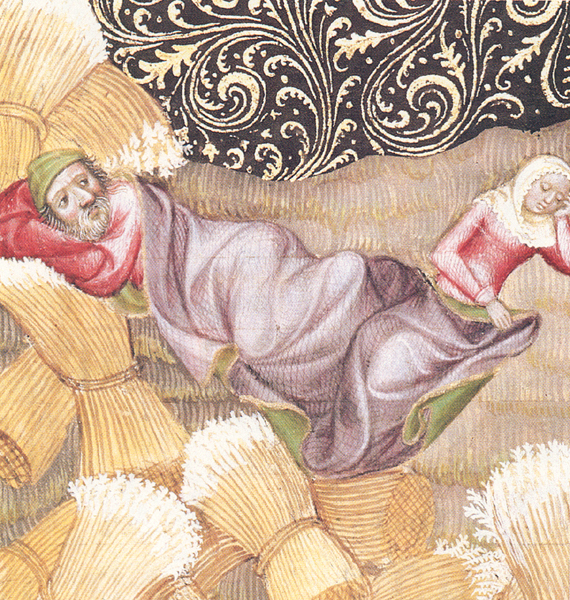Image Details

Austrian National Library, Vienna
Bundled together like sheaves of grain, Boaz and Ruth share a blanket, symbolic of espousal, in this 14th-century illustration from the Wenzel Bible. Ruth had met Boaz only once before, when she gleaned in his field. Boaz instructed the harvesters to leave extra grain in her path and even shared his meal with her. At Naomi’s prompting, Ruth returned to the field on the night Boaz oversaw the threshing, lay at his feet and by asking him to cover her with his blanket, declared her willingness to be his wife.
Because he was a kinsman of Naomi’s husband Elimelech, Boaz’s betrothal to Ruth gave him the right to buy back Elimelech’s land. By marrying the widow of Elimelech’s son, Boaz would “perpetuate the name of the deceased upon his estate” (Ruth 4:5). Ruth, by moving to Bethlehem with Naomi and offering herself to Boaz, helped ensure the continuity of Naomi and Elimelech’s family. Boaz, by marrying Ruth and restoring the family and land, dramatized the Bible’s principal theme—the continuity of the Jewish people in their land.
